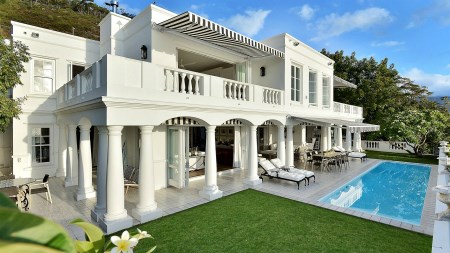Strategically-located, upmarket niche shopping complexes are contributing to the upswing in prices of nearby residential property and to the sales of new and existing sectional title units.
This is according to Pam Golding Properties MD Laurie Wener, who cites several examples of the impact of small-scale, bigger spend shopping centres.
The Pam Golding on Main multi-use retail and office development opened mid 2015 in Kenilworth Main Road, anchored by a 510 m² Pick n Pay store. Its pavement café ambience is already making the area more vibrant and cosmopolitan and boosting interest in buying up and renovating flats in the area.
PGP sectional title specialist for the southern suburbs, Sandra Barrett, says established Kenilworth two- and three-bedroom flats (and duplex townhouses with gardens) are increasingly popular. These often have only one bathroom, and their renovation by younger buyers frequently involves transforming the kitchen space to include a second bathroom, or replacing a bath with a walk-in shower and WC.
Palmyra Junction opened five years ago in Claremont (anchored by a large, “green” Woolworths Food convenience store). Pam Golding Properties exclusively marketed four plot and plan homes at 44 on Palmyra this year and they have all sold, priced from R4,35-R5,25 m.
The last of the developer’s release has also been issued for Claremont’s live-work-play concept The Quadrant. Pam Golding Properties Development Sales Executive Bev Bloch says this comprises a one bedroom unit at R1,45m, a few executive one bedrooms starting at R1,525m, two bedroom apartments from R2,5million and a limited number of penthouses at R3,45 million.
Belvedere Court in Claremont was developed opposite Belvedere Square shopping centre (with Woolworths and a range of service retail offerings). Sixteen apartments, each 75m² and priced from R1.35 million to R1.525 million, sold out last year in just two months.
In Sea Point, Berman Bros Group added offices and shops to the former Galleria to create The Point in Regent Road, which offers everything from groceries to medical services. Main Road has Piazza St John (Woolworths, Ocean Basket, trendy shops and coffee bars) while Piazza Da Luz offers Wellness Warehouse, restaurants, hair and beauty outlets in the mix.
Pam Golding Properties Atlantic Seaboard and City Bowl area manager Basil Moraitis says these small shopping centres have all contributed to the regeneration of the area and encouraged locals to enjoy more traditional high street local shopping instead of travelling through to the V&A Waterfront.
This has helped underpin property price rises in Sea Point, which is characterised by high-rise, luxury apartments close to the beach. Many professionals buy Sea Point apartments to take advantage of the quick commute into the central city, while investors rent out sea-facing units to holidaymakers.
Moraitis says entry level in Sea Point starts from R1.5million for a one bedroom apartment. Two bedrooms start at around R2.6million and can range up to R12-R15million for a three bedroom penthouse.
Wener says shopping centres supporting property price growth are those catering to current influences and trends such as:
Changing demographics: It is increasingly common to live alone, among young, unmarried or divorced people and the elderly;
Trimming down: The higher the socio-economic status, the less bulk shopping is done. Shoppers buy what they need more frequently, two or three times a week, reducing food wastage. Price is not the biggest factor, but convenience, quality and freshness are key.
Time is a luxury: Shoppers want to easily identify a limited number of stores, and their products, for focused, quick navigation;
Neighbourhood watch: Consumers enjoy differentiation and innovation, ideally new experiences adapted to local flavour. An interesting architectural style, good use of indoor and outdoor space, relaxing meeting places and an appealing atmosphere attract shoppers;
Retail mix: Wellness and grooming services, as well as niche brands in accessories such as jewellery and sunglasses, are popular; and
Creative cuisine: Interesting coffee shops, relaxed restaurants, artisanal food and craft beverages complete the mix.
South African research is limited on how a shopping centre impacts on the value of adjacent residential properties. However, research funded by the National Treasury (Economic Research Southern Africa) and released this year showed a statistically significant correlation between proximity to Walmer Park shopping centre in Port Elizabeth and adjacent property prices.
Specifically, closeness to Walmer Park was valued at R112.68 per metre. The convenience of being near a shopping centre outweighed potential problems of increased traffic, noise and pollution. (www.econrsa.org/system/files/publications/workingpapers/workingpaper_518.pdf.)
More detailed American research backs the theory that, excluding the immediate surrounding area, properties’ values increase the closer they are to the shopping centre. These results are similar across a diverse range of commercial developments and different cities. (sites.duke.edu/urbaneconomics/?p=1180).

